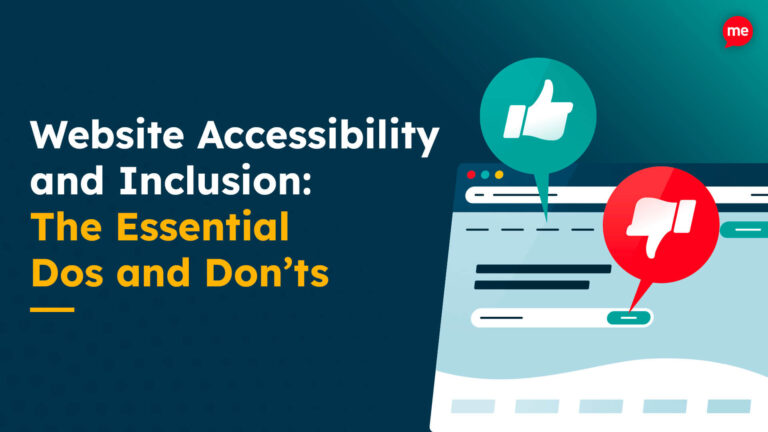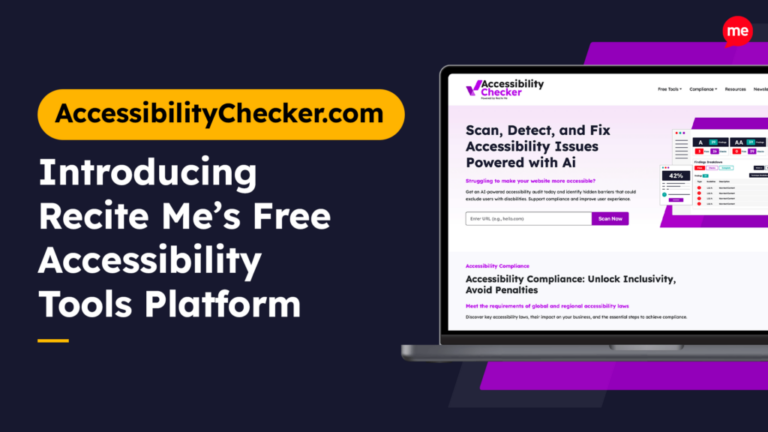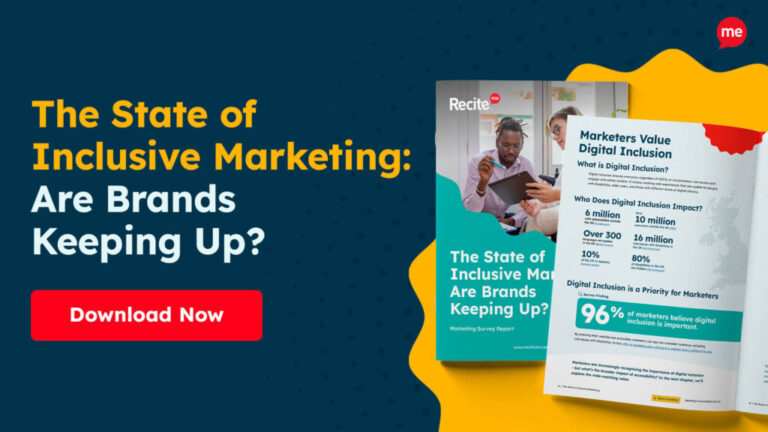In today’s digital world, ensuring equal access and inclusivity for all users is not just the right thing to do, but the thing you must do. Unfortunately, there are several misconceptions surrounding digital accessibility that hinder its progress. So we’re going to debunk common myths and shed light on the importance of an inclusive website. Get ready to challenge your assumptions!
1. Assistive toolbars make your website accessibility compliant
False – an Assistive Toolbar alone does not make your website accessibility compliant, your website needs an accessible build.
To ensure website accessibility compliance, it is important to follow recognized accessibility guidelines, such as the Web Content Accessibility Guidelines (WCAG). These guidelines provide comprehensive criteria and techniques for creating inclusive and accessible websites. The guidelines and success criteria are organized around four key principles that set the foundation for anyone to access and use web content.
By applying these principles, web designers and content creators can work toward making content more accessible to users with a range of abilities. Find out here how Recite Me’s new website Accessibility Checker can help you achieve your website accessibility compliance goals.
2. People with disabilities don’t use my website
False – 1 in 5 people have a disability so there is a large chance someone using your site is disabled.
Website data can provide us with a lot of information and this is something but this isn’t the full story! What data can’t and won’t tell you, is the exact number of disabled users who have visited your website. In the online world we are all hidden to some extent, so we will never know exactly how many people with disabilities use our websites but given people with disabilities make up a significant portion of the population and actively engage with websites and digital content. For a more in-depth explanation of this check out our article How Many People with Disabilities Use Your Website?
By assuming that people with disabilities do not use your website, you risk excluding a substantial potential audience and missing out on valuable opportunities for engagement, sales, and growth.
3. An inclusive website only helps disabled people
False – an inclusive website benefits everyone!
In reality, an inclusive website provides advantages for a much wider range of individuals. For instance, users with slower internet connections or older devices can benefit from optimized website performance and efficient coding. Clear navigation and well-structured content make it easier for users to find information. By implementing accessibility features, businesses can create a user-friendly website that improves the experience for all users, regardless of their abilities or circumstances.
4. I can just ignore being accessible on my website
False – The Department of Justice (DOJ) mandates that all state and local government digital content is fully accessible.
The Department of Justice (DOJ) has prioritized web accessibility in recent years. There are a few critical pieces of website accessibility legislation to be aware of:
- DOJ released a final rule reaffirming the requirements of state and local governments (including schools and libraries) to provide accessible websites and mobile applications.
- The Americans with Disabilities Act (ADA)
- Section 508 Amendment to the Rehabilitation Act of 1973
- State Specific Legislation
The legislations make it illegal to discriminate against disabled people online.
5. Accessible websites are ugly or boring
False – in fact, accessible design principles often enhance the overall look of a website.
You don’t have to sacrifice design for accessibility. Accessible websites can be aesthetically pleasing and user-friendly for all audiences. Prioritizing clear and consistent layouts and well-organized content can result in a beautiful website that everyone can use.
Accessibility does not limit design possibilities; instead, it encourages creative solutions that accommodate diverse needs while maintaining a visually appealing and engaging website. So, accessible websites can be both aesthetically pleasing and inclusive, ensuring that all users can access and appreciate the website’s design and content.
If you’re not sure where to start with accessible website design check out these 10 Website Design Tips for an Accessible Website by Volcanic’s Senior Designer and published author, Dimitris Georgakas.
Start Working on Your Web Accessibility Strategy Today
Recite Me can support businesses of every type in all locations with an innovative suite of on-demand digital accessibility software, tools, and resources:
- Our Accessibility Checker runs 396 separate scans, identifies WCAG non-compliance issues, and generates a prioritized fix queue for effective resolution.
- Our Accessibility Toolbar allows website visitors with varied needs and preferences to customize your website for ease of navigation and comprehension.
- Our free website accessibility training courses provide a comprehensive introduction to the principles and practices of digital accessibility.
Contact our team today for more information and get started on your web accessibility strategy.



